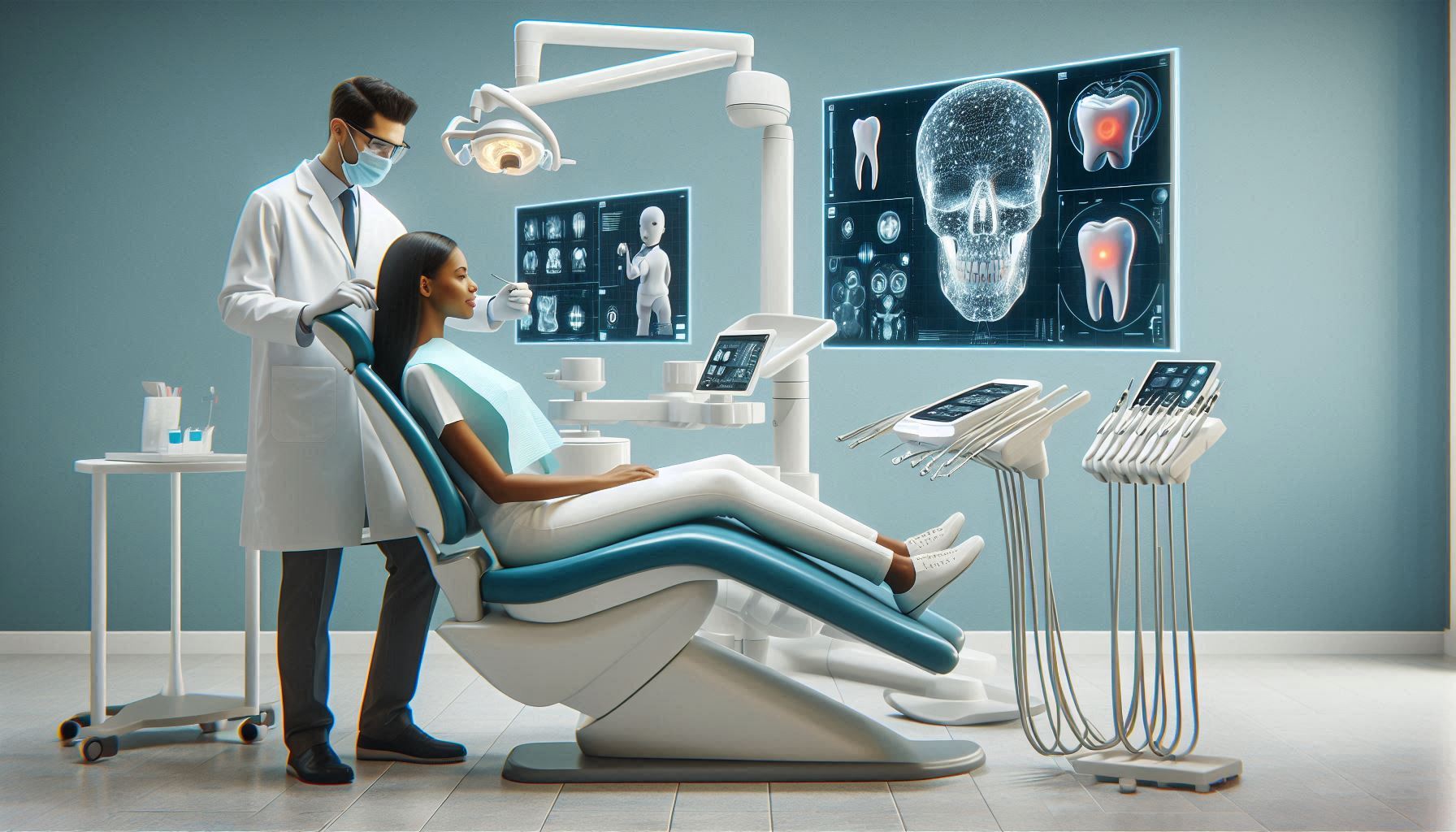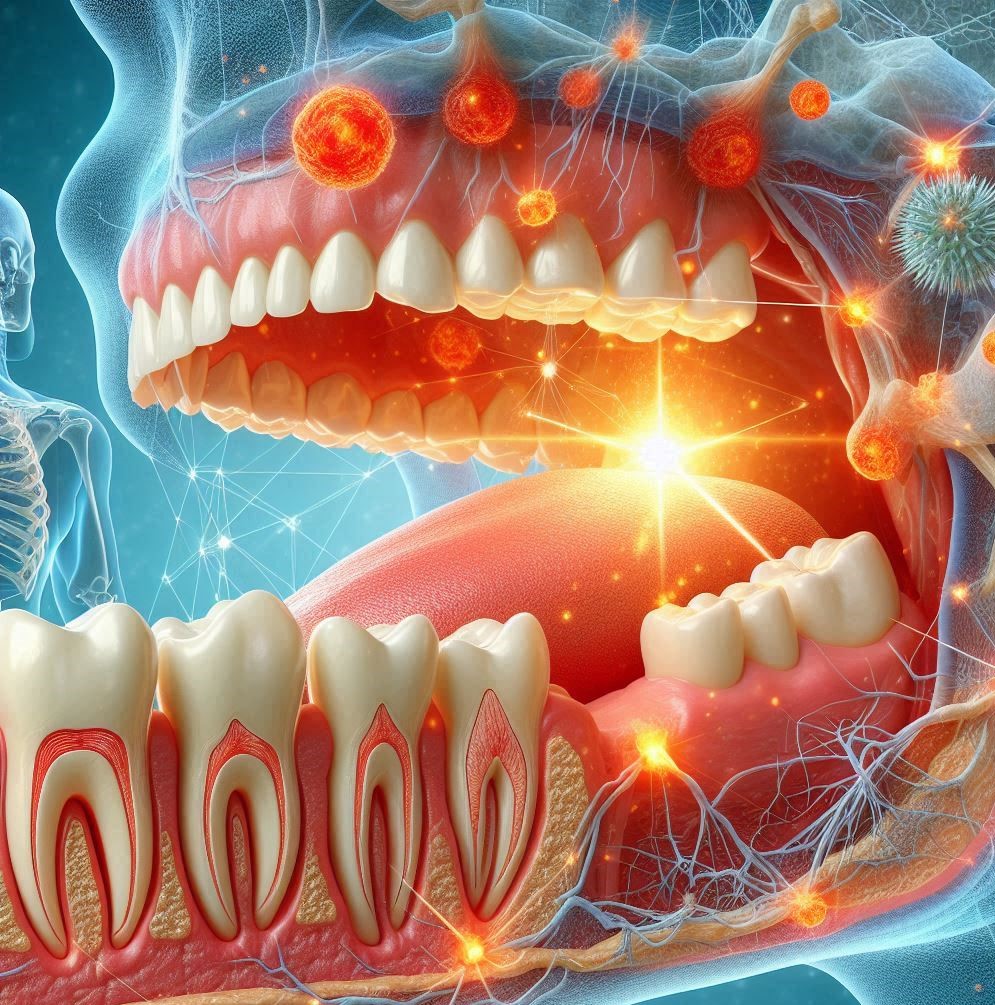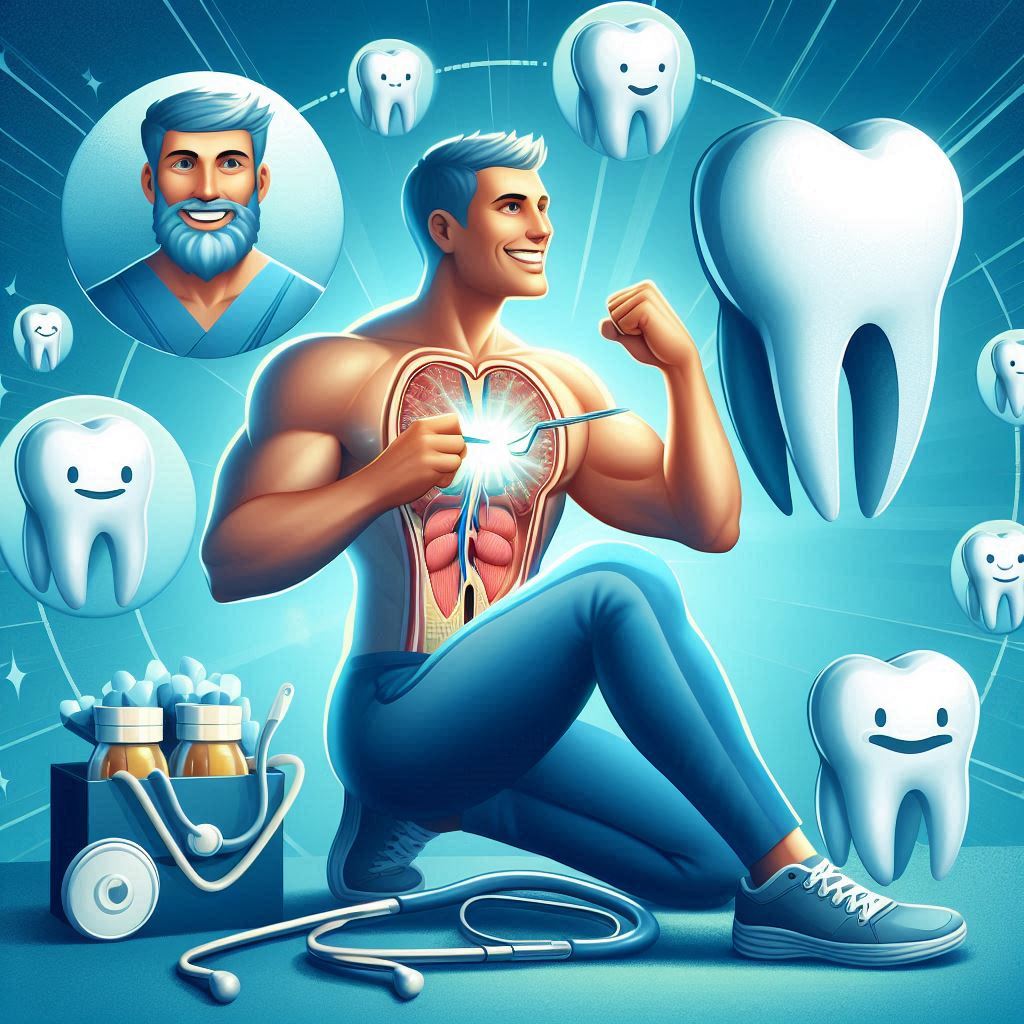In recent years, dentistry has undergone a significant transformation, primarily fueled by technological innovations. These advancements are fundamentally changing how dental professionals diagnose, treat, and engage with patients, resulting in improved care and enhanced patient experiences. Digital imaging technologies, such as digital X-rays and Cone Beam Computed Tomography (CBCT), have reduced radiation exposure while providing high-resolution images that facilitate quicker and more accurate diagnoses. Intraoral scanners have replaced traditional impression methods, enhancing patient comfort and speeding up the process of creating dental appliances.
3D printing is allowing for the rapid production of custom dental solutions, streamlining workflows and improving fit. Teledentistry has increased access to care, enabling remote consultations and follow-ups, particularly beneficial for those in underserved areas. Laser dentistry minimizes discomfort and promotes faster healing, while artificial intelligence is assisting in diagnostics and treatment planning. Together, these technologies are not only improving the efficiency of dental practices but also fostering better communication and engagement between patients and providers, ultimately leading to healthier outcomes and more satisfying dental experiences.
1. Digital Imaging Technologies
1.1 Overview
Digital Imaging in Dentistry
Digital imaging has revolutionized dental diagnostics, significantly enhancing the way dental professionals assess and treat patients. Unlike traditional film X-rays, digital X-rays reduce radiation exposure while providing immediate, high-resolution images. A notable advancement is Cone Beam Computed Tomography (CBCT), which offers three-dimensional imaging, allowing for detailed visualization of teeth, bone structures, and surrounding tissues.
1.2 Benefits of Digital Imaging
The immediate availability of digital images greatly enhances decision-making, enabling dentists to quickly formulate effective treatment plans. Digital records are also easier to store, share, and retrieve, leading to improved practice efficiency and better collaboration with specialists.
1.3 Enhancing the Patient Experience
For patients, digital imaging means less discomfort and faster results. The clarity of the images facilitates better communication between dentists and patients, making it easier to explain diagnoses and treatment options. This transparency fosters informed consent and boosts patient confidence in their care.
2. Intraoral Scanners
Intraoral scanners are handheld devices that create digital impressions of a patient’s mouth, replacing traditional impression materials that can be uncomfortable and time-consuming.
2.1 Advantages of Intraoral Scanners
The use of intraoral scanners presents several benefits:
- Enhanced Comfort: By eliminating the need for putty impressions, discomfort is significantly reduced, especially for patients with a strong gag reflex.
- Speed and Accuracy: Digital impressions can be captured quickly and with high precision, resulting in better-fitting crowns, bridges, and aligners.
2.2 Impact on Treatment
Intraoral scanners enable dental practices to streamline workflows. For instance, orthodontists can rapidly create custom aligners, thereby reducing the time from consultation to treatment.
3. 3D Printing in Dentistry
3D printing technology is becoming increasingly prevalent in dentistry, allowing for the rapid production of customized dental appliances, crowns, bridges, and even surgical guides.
3.1 Customization and Efficiency
The ability to produce tailored solutions in-house not only reduces wait times but also improves the fit and comfort of dental devices. This technology also lowers costs, as dental practices can manufacture appliances on-site.
3.2 Patient Benefits
Patients enjoy quicker turnaround times for prosthetics and restorations, leading to fewer appointments and reduced treatment durations. Furthermore, the precision offered by 3D printing enhances overall satisfaction with dental work, making it an invaluable tool in modern dentistry.
4. Teledentistry
4.1 Definition and Growth
Teledentistry utilizes digital communication tools to deliver remote dental care, revolutionizing how patients access services. Its importance surged during the COVID-19 pandemic, when in-person visits posed health risks. This necessity highlighted the potential of teledentistry to maintain continuity of care while minimizing exposure. Through video consultations, phone calls, and secure messaging platforms, dental professionals can provide essential services without requiring patients to visit the office physically.
4.2 Benefits for Patients
Teledentistry offers several advantages that enhance patient care:
- Accessibility: For patients living in remote or underserved areas, teledentistry provides access to dental professionals without the burden of traveling long distances. This is particularly beneficial for individuals who may lack transportation options or those who experience mobility challenges.
- Convenience: Follow-up appointments and consultations can easily be conducted from home, saving patients valuable time and reducing the need for time off work. This convenience encourages more individuals to seek necessary dental care without the barriers typically associated with traditional visits.
4.3 Applications
Teledentistry is especially useful for a variety of applications, including routine check-ups, initial consultations, and follow-up visits. It allows dental care providers to manage patient needs effectively without requiring physical appointments. This approach can also be advantageous for monitoring ongoing treatments, as patients can share their progress and any concerns in real time, ensuring that care is both responsive and efficient.
5. Laser Dentistry
5.1 Introduction to Laser Technology
Laser technology is increasingly adopted across various dental procedures, such as cavity treatment, gum reshaping, and teeth whitening. This innovative approach offers a minimally invasive alternative to traditional methods, reducing trauma to surrounding tissues and enhancing patient comfort.
5.2 Benefits of Laser Dentistry
The advantages of laser dentistry are multifaceted:
- Reduced Pain and Discomfort: Many procedures can be performed with significantly less pain, leading to a decreased reliance on anesthesia. Patients often report a more comfortable experience compared to traditional techniques.
- Minimal Bleeding and Swelling: Lasers promote faster healing by cauterizing tissue during treatment, which minimizes bleeding and swelling. This expedited recovery time can lead to less discomfort post-procedure, further enhancing the patient experience.
5.3 Patient Experience
Patients frequently express less anxiety when undergoing laser treatments due to the reduced discomfort and quicker recovery times. This positive experience can encourage individuals to seek necessary dental care rather than postponing treatments, ultimately leading to better oral health outcomes.
6. Artificial Intelligence (AI) in Dentistry
6.1 Role of AI
Artificial intelligence is increasingly being integrated into dental practices for diagnostics and treatment planning. AI algorithms can analyze vast datasets, including imaging results and patient histories, to assist dentists in identifying conditions and developing treatment plans tailored to individual needs.
6.2 Enhancing Diagnostics
AI-powered tools can help detect issues such as cavities and periodontal disease earlier than traditional methods. Early detection is crucial, as it often leads to more effective treatment outcomes and can significantly improve long-term oral health.
6.3 Personalizing Patient Care
AI can create customized treatment plans based on comprehensive patient data, ensuring that care is tailored to each individual’s unique needs. This personalization enhances patient satisfaction and improves overall treatment efficacy, fostering a more positive patient-provider relationship.
7. Enhanced Patient Communication
7.1 Importance of Communication
Effective communication is a cornerstone of quality dental care. Innovations in technology are facilitating better interactions between dental professionals and patients, fostering transparency and trust. Clear communication enhances patient understanding of treatment options and helps build confidence in the care process.
7.2 Patient Portals and Mobile Apps
Patient portals allow individuals to access their dental records, treatment plans, and appointment schedules online. Additionally, emerging mobile apps provide reminders for oral hygiene routines and educational resources to improve patient engagement. These tools empower patients to take an active role in their oral health.
7.3 Empowering Patients
By offering easy access to information and educational resources, dental practices can empower patients to manage their own oral health more effectively. This proactive engagement leads to better adherence to treatment plans and ultimately improves health outcomes.
8. Wearable Technology
8.1 Introduction to Wearable Devices
Wearable technology is being explored for its potential to monitor oral health. Devices designed to track conditions such as sleep apnea or assist patients in managing their oral hygiene routines are emerging as valuable tools in modern dentistry.
8.2 Benefits of Wearables
Wearable devices can provide critical data to dental professionals, allowing for proactive care. For instance, a device that monitors teeth grinding can alert both the patient and their dentist, enabling timely intervention. This real-time data facilitates a more responsive approach to patient care.
8.3 Enhancing Patient Engagement
Wearables encourage patients to stay engaged with their oral health by reminding them to maintain good hygiene practices and attend regular dental check-ups. This heightened engagement can lead to improved oral health outcomes and a greater understanding of the importance of preventive care.
9. Future Trends in Dental Technology
9.1 Ongoing Innovations
The future of dentistry is likely to see further advancements, including the integration of virtual reality (VR) for patient education and augmented reality (AR) for treatment simulations. These cutting-edge technologies can enhance the patient experience, providing immersive educational experiences that improve understanding of complex procedures.
9.2 Focus on Preventive Care
As technology continues to evolve, there will be a growing emphasis on preventive care. Digital tools that promote regular check-ups and early detection of dental issues will become increasingly integrated into dental practices. This proactive approach aims to improve long-term oral health and reduce the need for more extensive treatments. The integration of these technological innovations into dentistry is reshaping the field, enhancing patient experiences, and improving overall health outcomes. As dental practices adopt these advancements, they create a more efficient, accessible, and patient-centered care environment.
Conclusion
Innovations in dentistry are transforming the landscape of dental care, resulting in improved patient outcomes, enhanced efficiency, and greater accessibility. As technology advances, the future of dental practice appears promising, emphasizing personalized care and patient engagement. These developments benefit practitioners while significantly enhancing the overall patient experience, making dental care more effective and enjoyable. By adopting these technologies, dental professionals are not only refining their practices but also fostering a culture of proactive health management among patients. This shift encourages individuals to take an active role in their oral health, leading to healthier communities and better long-term outcomes.
Tools such as teledentistry, digital imaging, and AI-driven diagnostics allow for more timely and accurate care, reducing barriers to access. Additionally, innovations like 3D printing and laser dentistry improve treatment precision and comfort, further enhancing patient satisfaction. Ultimately, the integration of these advancements is paving the way for a more efficient, patient-centered approach to dental care, ensuring that both practitioners and patients thrive in an evolving healthcare landscape. This collaborative effort aims to promote better oral health for all, making dental care a more integral part of overall wellness.
SOURCES
Journal of Clinical and Diagnostic Research (2017) – Cone Beam Computed Tomography in Dentistry: A Review
Journal of Esthetic and Restorative Dentistry (2020) –
Intraoral Scanners: A Review of Current Technology
Journal of Prosthodontics (2018) – 3D Printing in Dentistry: A Review of Current Applications
Journal of the American Dental Association (2020) – Teledentistry: A New Era in Dental Care
Dental Clinics of North America (2019) – Applications of Laser Technology in Dentistry
British Dental Journal (2021) – Artificial Intelligence in Dentistry: Current Applications and Future Directions
International Journal of Dentistry (2019) – The Role of Communication in Dental Care
Journal of Dental Research (2020) – Wearable Technology in Dentistry: A Review
The Journal of Contemporary Dental Practice (2021) – Future Trends in Dental Technology
HISTORY
Current Version
October 17, 2024
Written By:
SUMMIYAH MAHMOOD




